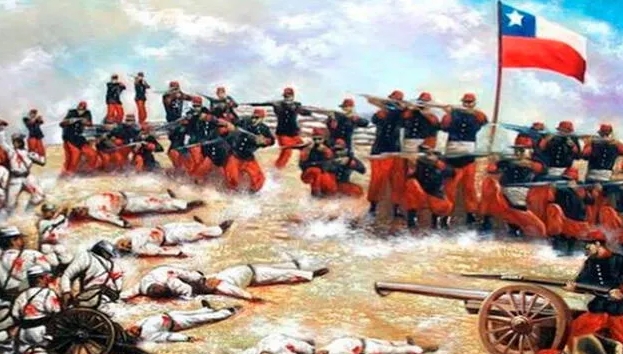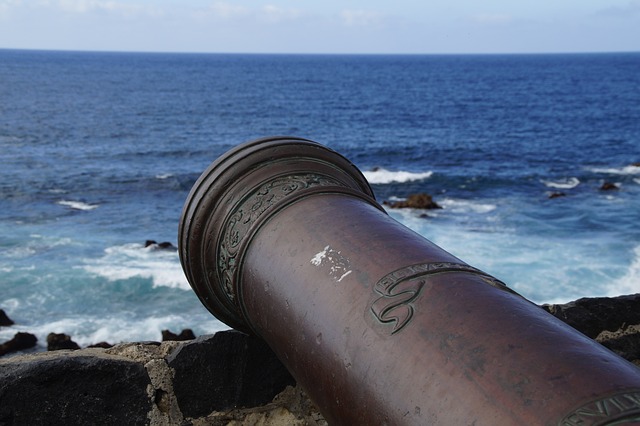On October 20th, 1883, Chile signed an agreement with Peru that put an end to one of the most important armed conflicts of the end of the XIX century: the Pacific War.
The treaty of Ancon sealed the peace between both countries, establishing a series of conditions and compensations after the victory of Chilean forces.
Despite the initial opposition of Peruvian authorities, the country’s president Miguel Iglesias accepted the terms established in the document.
It was pointed out then, that Peru handed over control of the province of Tarapaca to Chile in perpetuity; it was also established that Tacna and Arica were to remain under Chilean administration for a period of ten years.
After this time had passed, a plebiscite would decide which of the two countries would keep sovereignty over these territories.
The vote never took place in the stipulated timeframe and Chile continued occupying the zone until both countries agreed to leave Tacna for Peru and Arica for Chile in 1929, also establishing a border dubbed the linea de la Concordia (line of Concord).
Meanwhile, the other country involved in the conflict, Bolivia, did not immediately accept signing a peace treaty with Chile and only agreed to a truce treaty, established on April 4th, 1884.
Only in 1904 was peace reached, and the borders enforced in both countries to this day were set.

Pacific War
Ever since the country was organized, it was contended that the northern border of our territory was the Atacama desert, an imprecision that favored different interpretations regarding where the sovereignty enforced by Chile ended in the northern area, and thus, where to set the border with Bolivia.
Our government contended then, that Chile had control until the 23rd parallel, while Bolivia contended domination until the 25th parallel, which generated controversy between both nations.
In 1866, under the presidency of Jose Joaquin Perez and the command of general Mariano Melgarejo in Chile and Bolivia respectively, an attempt was made to resolve the border differences through a treaty that set the border between both countries at the 24th parallel.
In addition, the agreement stated that the profits obtained from the production of saltpeter and guano between the 23rd and 25th parallels would be split into equal shares between both nations.
However, our country never received the aforementioned profits, reason for which it was necessary to hold a new round of diplomatic formalities.
Conversations reached a good conclusion in 1874, year in which the previous agreement was annulled, keeping the 24th parallel as the border, but without sharing the profits and with the absolute resignation of both countries to aspire territories beyond the pre-established parallel.
In addition, the agreement determined that Bolivia would make a commitment to not set new taxes on the Chilean companies and people exploiting the region’s mineral riches for a period of 25 years.
Transgression and confrontation
The years following the agreement were fast-paced for the neighboring countries.
While our country rose unscathed from the economic ups and downs it faced until 1878 and enjoyed an enviable political stability, Peru and Bolivia went through important political changes.
In 1876, Mariano Ignacio Prado was elected president in Peru, while in Bolivia, Hilarion Daza’a government began.
Both governments implemented a series of measures to counter the economic crisis that affected them, including on Bolivia’s part a law that raised the taxes charged to Chilean companies located in the area by ten cents for every hundredweight of saltpeter.
This meant a clear violation of the agreement established in 1874, reason for which an alert was called by the Chilean businessmen posthaste, who ignored the new regulations and denied payment, unleashing a series of events there would be no return from.
Such was the Bolivian government’s anger that they immediately ordered the embargo and auctioning of all Chilean saltpeter works in the zone. Anibal Pinto, the president of our country, reacted to the arbitrary measure by taking the city of Antofagasta the same day it was to be auctioned, February 14th, 1879.
As the days passed, the national Squadron would reach the Loa river, thus dominating almost all of the Bolivian coast.





 Muere Albert Einstein
Muere Albert Einstein